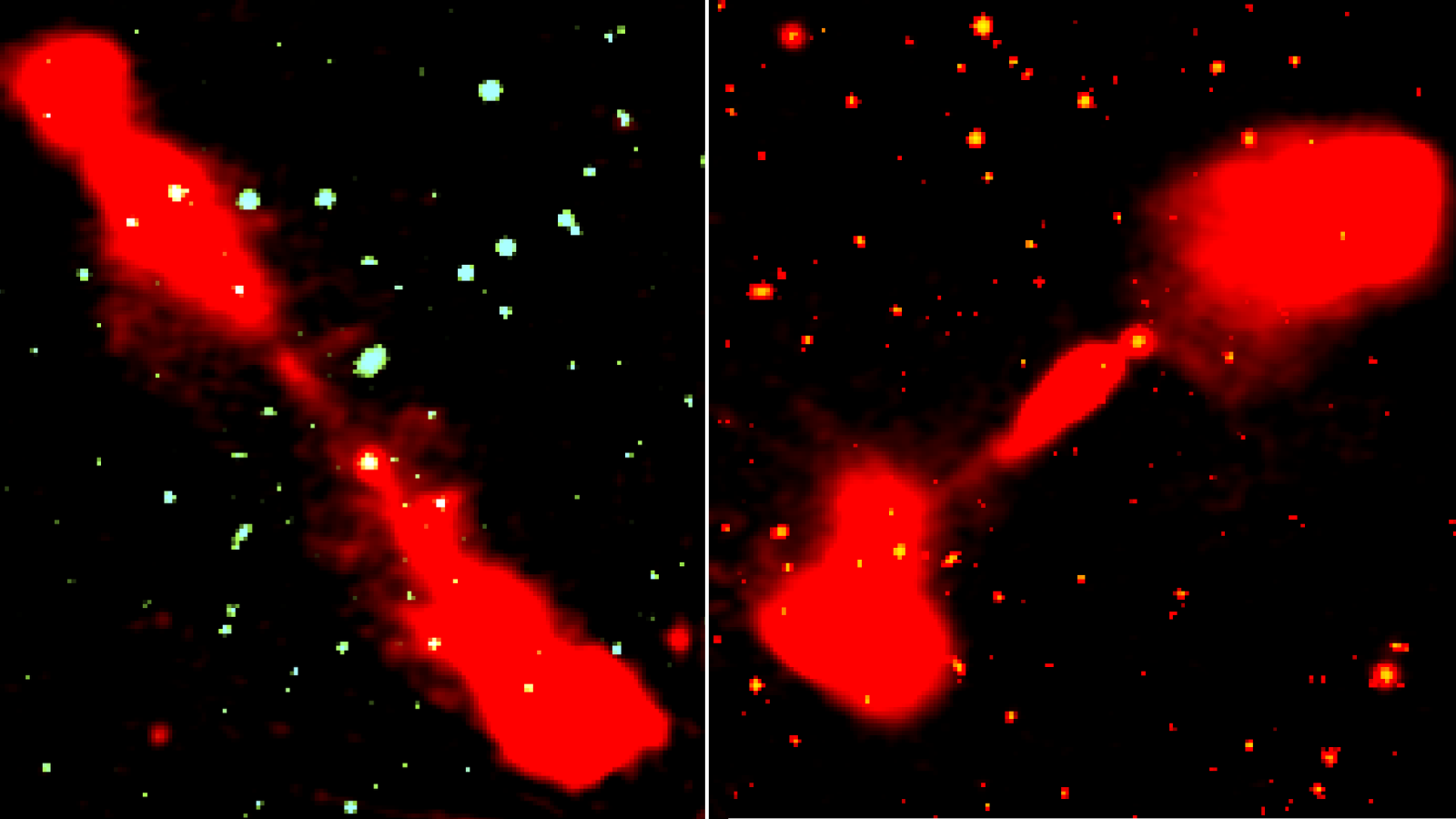Solar 'Tadpoles' May Contribute to Superhot Upper Atmosphere of the Sun
Are those really baby frogs swimming out from the sun? A NASA spacecraft spotted jets shaped like tadpoles in regions of intense solar magnetic activity.
These aren't living beings, of course. NASA says these "tadpoles" are entirely made up of superheated gas called plasma. It's the same kind of material that makes up about 99 percent of the observable universe. And what's more, the tadpoles may help solve a long-standing mystery, according to a statement from NASA.
The sun has an intensely heated upper atmosphere called the corona, which is 200 times hotter than the solar surface. (Temperatures in the corona range from 1.7 million degrees Fahrenheit or 1 million degrees Celsius, to more than 17 million F or 10 million C.)
Related: The Sun's Wrath: Worst Solar Storms in History
Scientists aren't sure what makes the sun's outer atmosphere so much hotter than the surface. It's a puzzling scientific question, and one that has practical implications. The corona releases charged particles that often make their way to Earth. During solar storms, the intense radiation can zap satellites or harm astronauts. The last such major event in the 1800s even shorted out telegraph lines. Understanding conditions on the corona can help researchers predict the behavior of such events.
Scientists so far have two explanations for this solar heating, involving either so-called nanoflares or electromagnetic waves; in fact, the two competing phenomena may actually work together, NASA officials said in the statement. The nanoflare theory suggests that explosions may send energy into the sun's atmosphere; the explosions happen when magnetic-field lines connect and eject hot, charged particles. The electromagnetic-wave theory stipulates that a phenomenon called Alfvén waves might shove charged particles into the sun's outer atmosphere.
The tadpoles have a role to play in this debate: Researchers think these plasma balls may dump heat into the corona when the sun is very active, particularly when the sun is at the peak of its 11-year activity cycle. During solar maximums, the sun also has more sunspots, solar flares and coronal mass ejections of particles.
Breaking space news, the latest updates on rocket launches, skywatching events and more!
Scientists found the tadpoles while looking at data from NASA's Interface Region Imaging Spectrograph. (IRIS). These tadpoles, also called pseudo-shocks, appear to come from sunspots (which are cooler magnetic regions on the sun) and then swim above the sun's surface to altitudes of more than 3,000 miles (4,800 kilometers). That altitude is nearly half the diameter of planet Earth.
"We were looking for waves and plasma ejecta, but instead, we noticed these dynamical pseudo-shocks," lead author Abhishek Srivastava, a researcher at the Indian Institute of Technology (BHU) in Varanasi, India, said in the statement.
The team ran computer simulations and found that the tadpoles may have enough plasma and energy to warm up the inner corona. They probably form when magnetic lines reconnect within sunspots.
IRIS has been on solar watch for five years, along with many other satellites in NASA's heliophysics group. The latest addition is the Parker Solar Probe, which launched in 2018 to "touch" the solar corona during several flybys. Its close proximity to the sun may give more information about why the corona gets so hot.
A paper based on the tadpole research was detailed last year in the journal Nature Astronomy.
Follow us on Twitter @Spacedotcom and on Facebook.

Elizabeth Howell (she/her), Ph.D., was a staff writer in the spaceflight channel between 2022 and 2024 specializing in Canadian space news. She was contributing writer for Space.com for 10 years from 2012 to 2024. Elizabeth's reporting includes multiple exclusives with the White House, leading world coverage about a lost-and-found space tomato on the International Space Station, witnessing five human spaceflight launches on two continents, flying parabolic, working inside a spacesuit, and participating in a simulated Mars mission. Her latest book, "Why Am I Taller?" (ECW Press, 2022) is co-written with astronaut Dave Williams.

